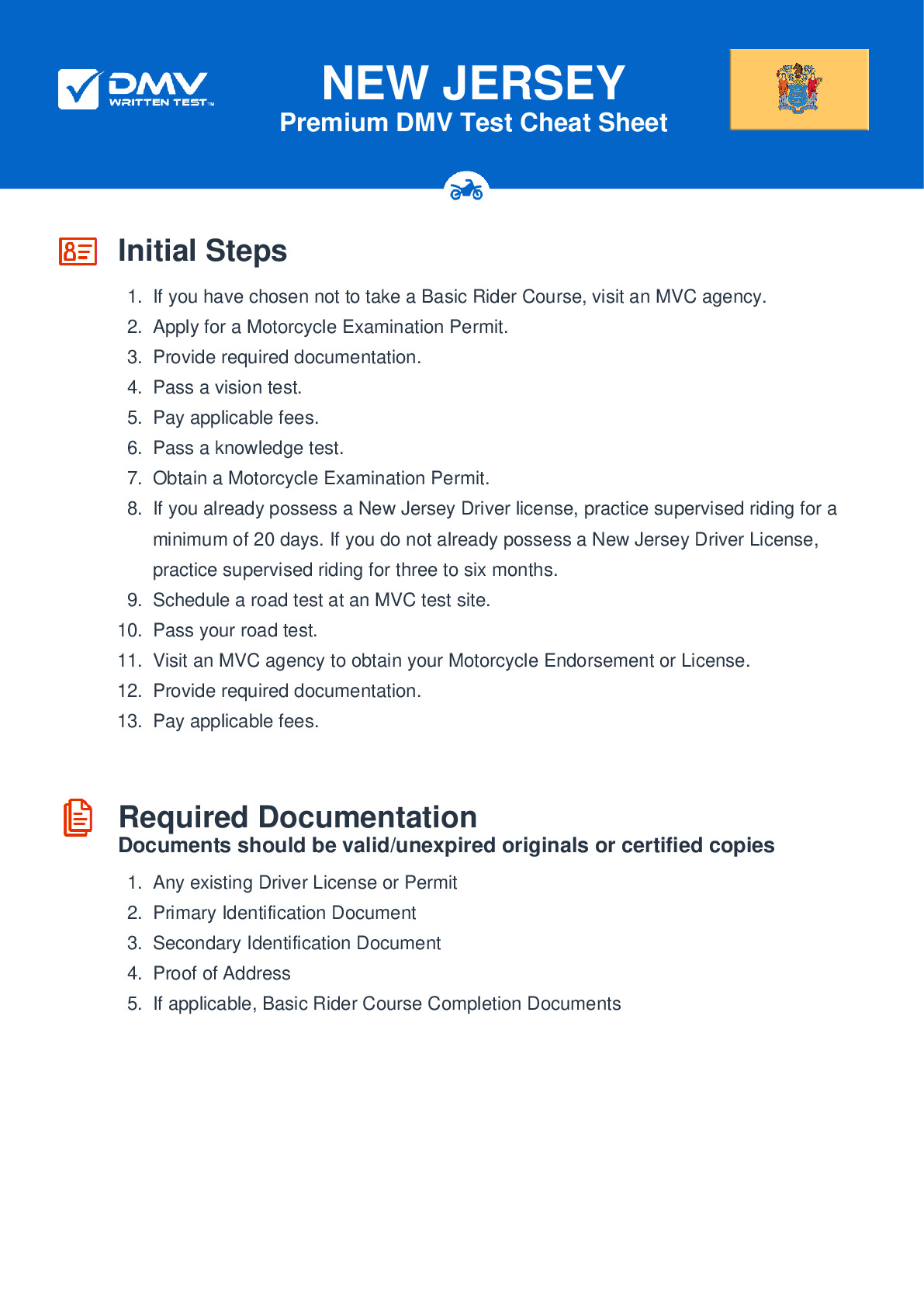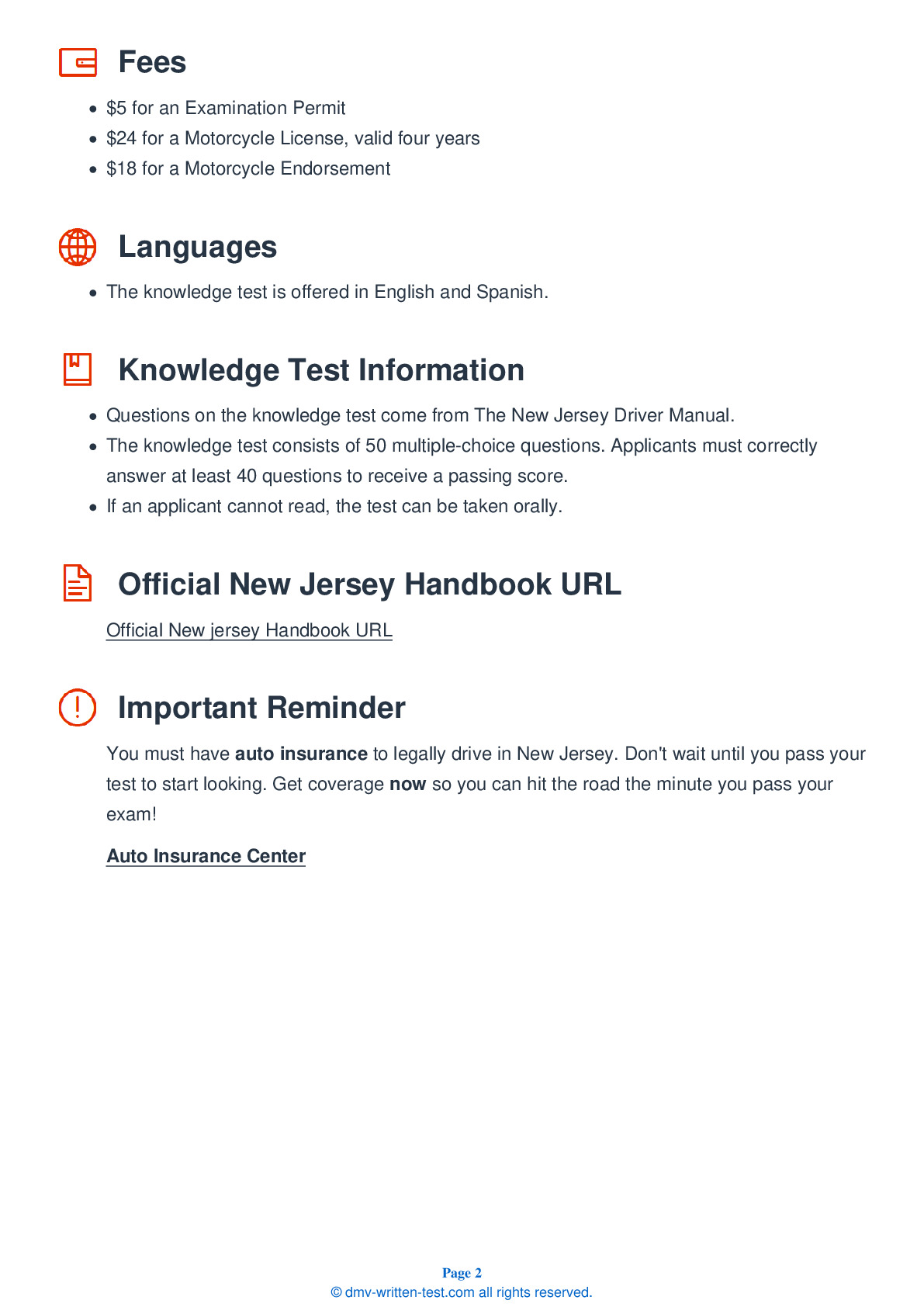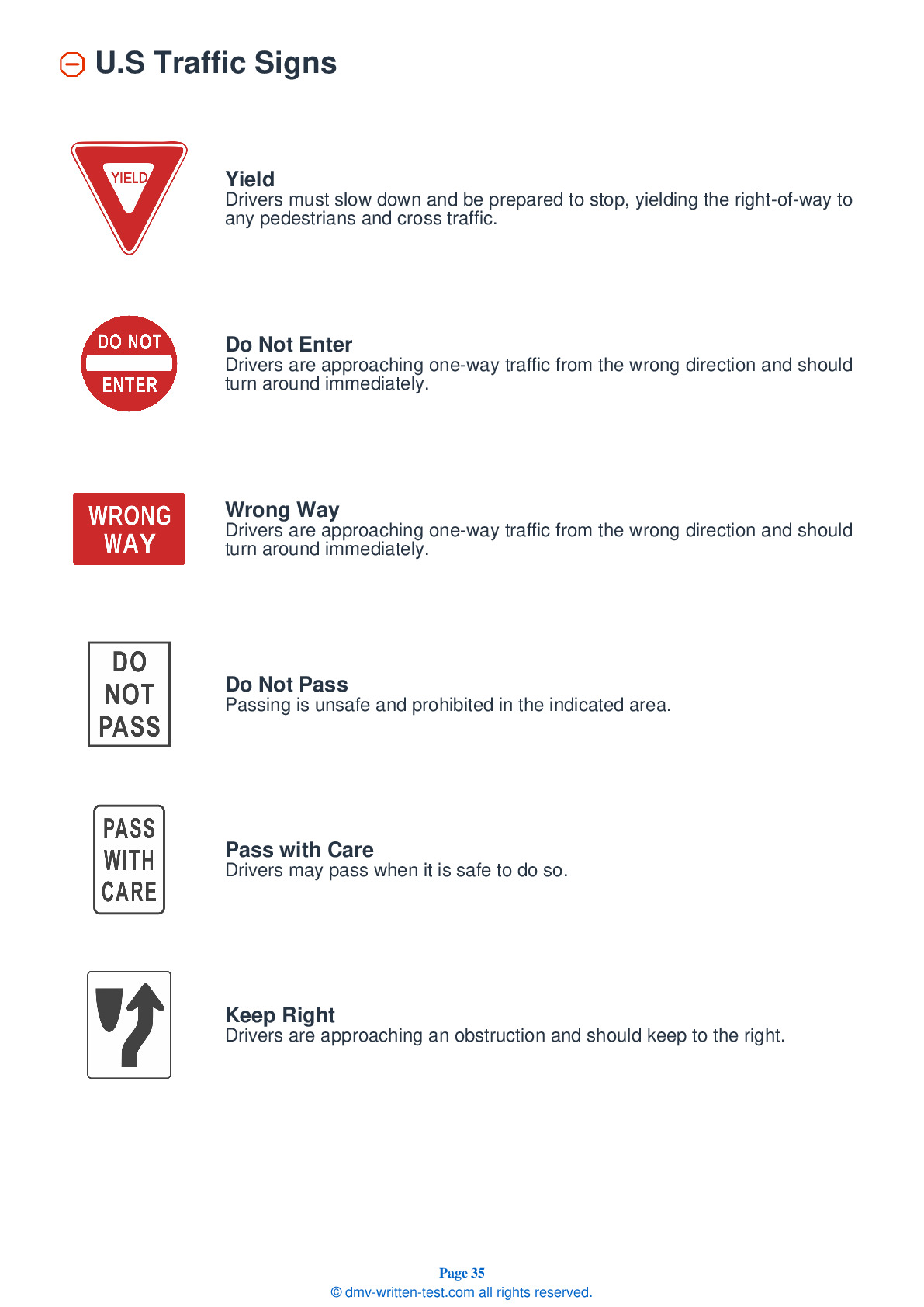2025 New Jersey Motorcycle Permit Test 8
The following questions are from real DMV written motorcycle permit tests. These are some of the actual permit questions you will face in New Jersey when getting your motorcycle learners permit. Each motorcycle theory practice test question has three answer choices. Select one answer for each question and select "grade this section." You can find this button at the bottom of the drivers license quiz. For a complete list of questions and answers for New Jersey please visit https://cheat-sheets.dmv-written-test.com/en/new-jersey/motorcycle.
Number of Tests
Number of Question
Passing Score
8. If your motorcycle begins to weave while you are riding over rain grooves or bridge gratings, you should:
Explanation
The weaving motion that occurs when a motorcycle rides over rain grooves or bridge gratings is generally not dangerous. If you experience weaving when riding over one of these surfaces, simply relax and proceed straight across the grooves or gratings at a steady speed. Trying to compensate for the weaving motion by zigzagging is more dangerous than riding straight.
9. A linked braking system:
Explanation
A linked braking system connects the front and rear brakes on a motorcycle. This system applies braking pressure to both brakes when either the front or rear lever is used. Check your owner's manual for a detailed explanation of the braking system on your motorcycle.
10. When riding, a cushion of space is helpful to:
Explanation
Allowing a cushion of space around your motorcycle at all times will help ensure that you will have time to react if another driver makes a mistake. You will need the space to maneuver safely.
11. Of the following, which should you not do to improve your safety when riding at night?
Explanation
To ride safely at night, you should reduce your speed, use your high beam headlight when you are not riding near other vehicles, and increase your following distance. Take advantage of vehicles ahead of you to provide clues about the upcoming road. Their headlights may help to illuminate the road ahead and their taillights will bounce up and down if the vehicle is being driven over bumps on the road.
12. The control for the rear brake is usually located:
Explanation
The rear brake of a motorcycle is usually operated with the right foot.
13. If a tire goes flat while you are riding and you must stop, it is usually best to:
Explanation
If one of your tires goes flat, hold both handle grips firmly, ease off of the throttle, and maintain a straight course. If you must brake, gradually apply the brake of the tire that is not flat (if you are certain of which tire that is). As you slow down, edge to the side of the road, squeeze the clutch, and stop.
14. More than half of all crashes:
Explanation




